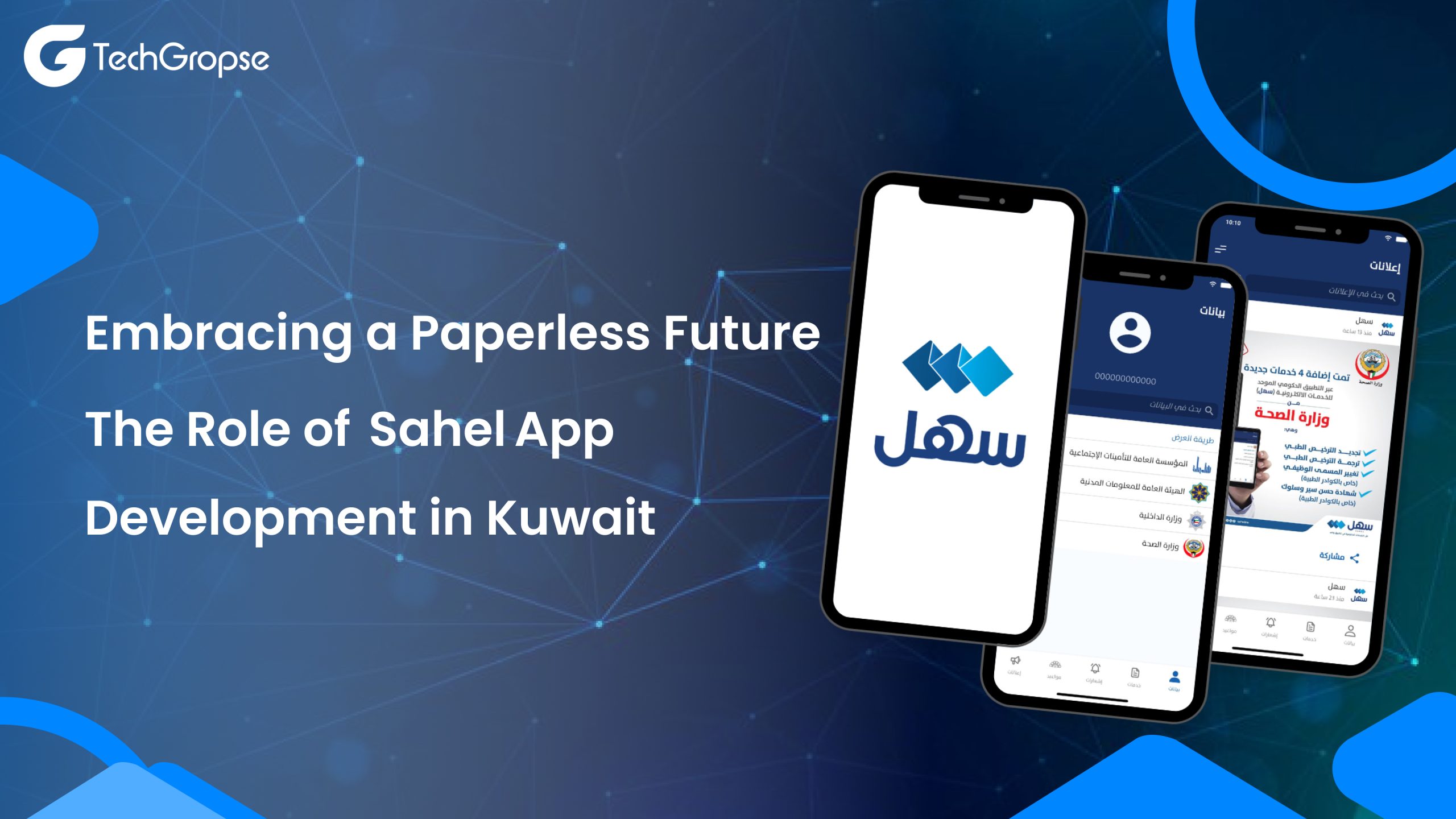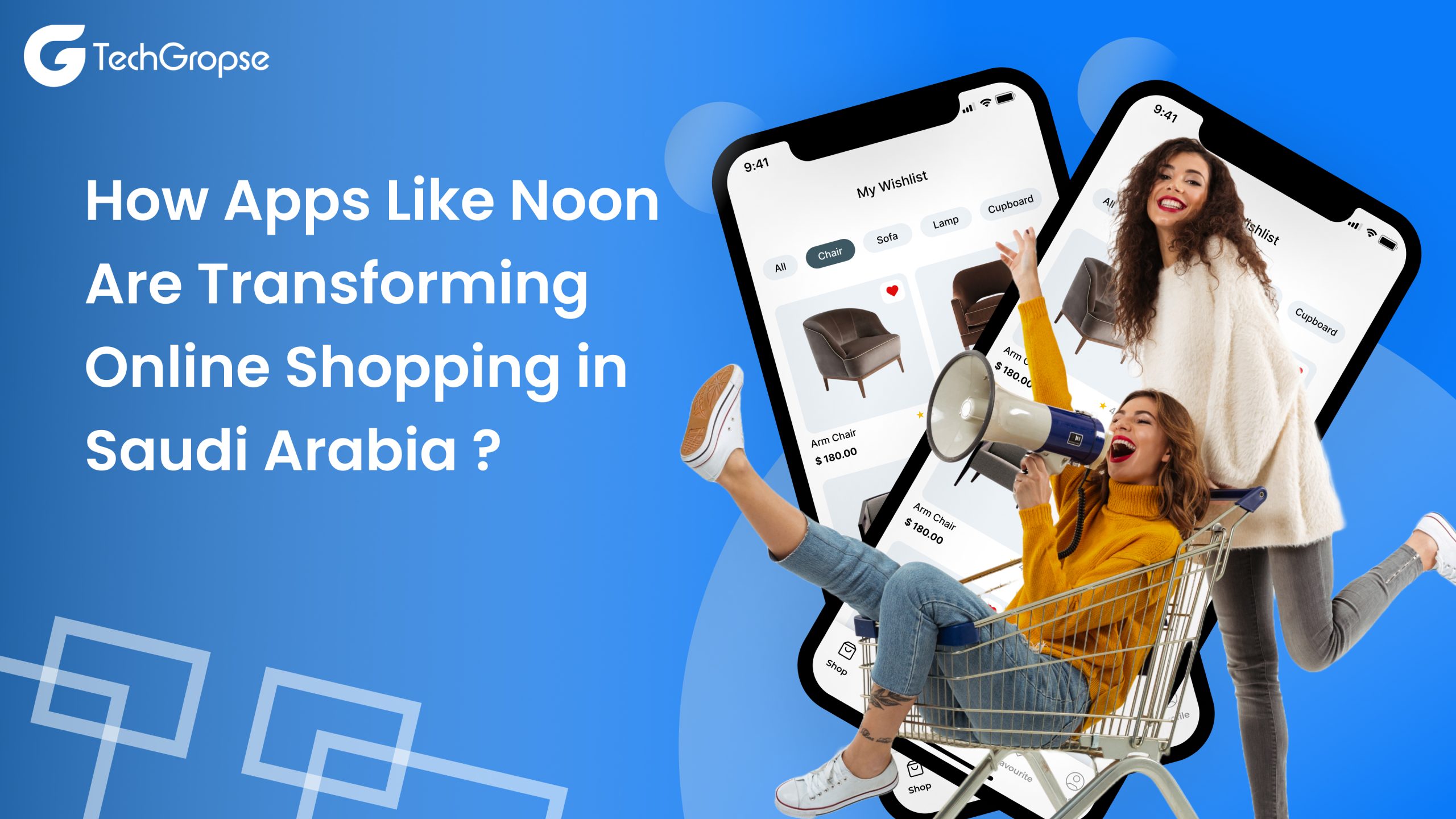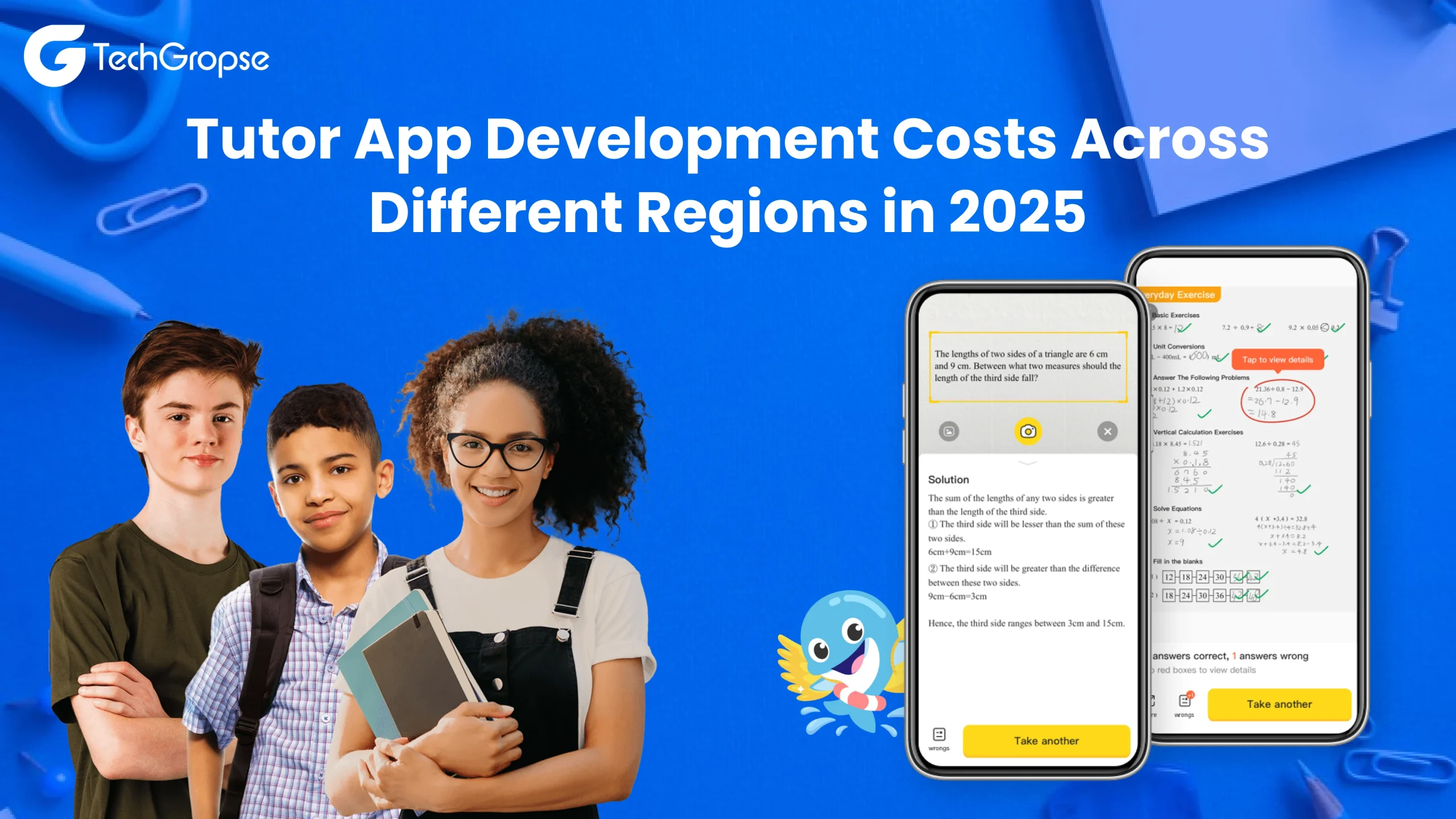Are you curious about the exciting healthcare app development trends? These trends are transforming how we manage our health, making it more convenient and personalized.
Imagine having a personal health assistant right in your pocket. With the rise of healthcare app development, managing your health has always been challenging.
These apps are designed to help you track your fitness, monitor your diet, remind you to take medications, and even book doctor’s appointments.
Whether you are a fitness lover or managing a chronic condition, healthcare apps provide complete solutions to fulfill your needs.
They bring healthcare to your fingertips, allowing you to stay on top of your health anytime, anywhere.
The on-demand app development of these apps involves creating user-friendly interfaces, ensuring data security, and integrating advanced technologies like AI and machine learning to provide health insights.
Before moving further, let’s have a quick look at the latest market analysis of healthcare app development trends
- Market Forecast year: (2022-2030)
- Base Year Market Size (2022): $6.89 bn
- Projected Year Market Size (2030): $50.94 bn
- Compound Annual Growth Rate (CAGR): 28.40% (approx.)
If you want to build a healthcare app, stay tuned to see how these innovations develop. It can help you lead a healthier, happier life!
The Impact of AI in Shaping the Future of Healthcare Apps
Did you know that the market for mobile health apps is expected to reach $32.42 billion by 2023?
And it’s projected to keep growing at a rate of 14.9% each year until 2030.
That means more and more people are using apps to help them stay healthy and fit. It’s pretty cool to see how technology is changing the way we take care of ourselves.
In 2023, medical apps made the most money out of all the different types of apps.
And get this – they’re expected to keep growing super fast at a rate of 15.3% every year from 2025 to 2030. That’s a lot of growth!
| Market Segment | Current Market Size | Projected Market Size | Projected Year |
| Global Healthcare Market | – | $974.5 billion | 2027 |
| Global Telemedicine Market | $87.41 billion (2022) | $286.22 billion | 2030 |
| Global Blockchain Healthcare Market | – | $14.25 billion | 2033 |
| US Healthcare Cloud Computing Market | – | $29.15 billion | 2026 |
So, if you want to upgrade your healthcare system with advanced technology, it is the perfect time to reach out to the best healthcare app company. They can help you keep up with all the new things happening in the healthcare world.
How is Mobile App Development Helping the Healthcare Industry?
Mobile app development is like a superhero for the healthcare industry. It is changing the game by making healthcare more accessible, and efficient
Here’s how:
- Accessibility: With healthcare apps, people can access medical help anytime, anywhere. They can schedule appointments, get medical advice, and even monitor their health from their smartphones.
- Efficiency: Apps streamline processes for both patients and healthcare providers. Patients can fill out forms online, reducing wait times. Doctors can access patient records instantly, leading to quicker diagnoses and treatments.
- Personalization: Apps can tailor health information and services to individual needs. They can remind patients to take their medications, track their exercise, and provide personalized health tips.
Overall, custom mhealth app development is making healthcare more convenient, faster, and better suited to each person’s unique needs.
Top 10 Healthcare App Development Trends
In the past 10 years, technology has been changing and growing a lot. Because of this, healthcare has been getting better and better with new solutions that we didn’t have before.
Here are trends in healthcare app development that are changing the way we get help online.
1. Artificial Intelligence Integration in Healthcare Apps
- AI-driven Diagnostics and Decision Support: In 2025, healthcare apps will leverage artificial intelligence for more accurate diagnostics and decision-making support. Say goodbye to Dr. Google and hello to AI-powered insights!
- Natural Language Processing for Enhanced Patient Interactions: With natural language processing, healthcare apps will revolutionize patient interactions. No more confusing medical jargon – just clear and personalized communication.
|
2. Telemedicine and Remote Patient Monitoring Solutions
Did you know that the telehealth market is growing super fast? In 2022, it was worth $83.5 billion, and experts think it will keep growing at a rate of 24% each year until 2030.
- Virtual Consultations and Remote Monitoring: Telemedicine will continue to skyrocket in popularity, offering virtual consultations and remote monitoring for patients. Get ready to see your doctor from the comfort of your couch!
- Integration of Telehealth Platforms with Electronic Health Records: Seamless integration of telehealth platforms with electronic health records will streamline patient care. Finally, no more fumbling with paper files at the doctor’s office.
|
3. Wearable Technology in Healthcare App Development
The market for wearable healthcare devices is growing super fast. In 2023, it was worth $32.5 billion, but by 2032, it’s expected to reach $68.4 billion.
- Health Monitoring Wearables for Chronic Disease Management: Wearable tech will play a significant role in managing chronic diseases by providing real-time health data. Who knew your smartwatch could be your health coach?
- Integration of Wearable Data with Healthcare Apps: Healthcare apps will integrate wearable data to offer a complete picture of your health. It’s like having a mini health dashboard right on your phone.
|
4. Blockchain for Data Security and Interoperability
Blockchain technology in healthcare is expected to grow a lot in the next few years. Right now, it’s worth about $58 million, but by 2035, it could be worth as much as $641 million.
That’s a big increase, with an average growth rate of 22% each year. Blockchain is changing the way we store and share medical information, making it more secure and efficient.
- Enhancing Data Security in Healthcare Apps with Blockchain: Blockchain technology will strengthen data security in healthcare apps, ensuring your medical information stays safe and secure. It’s like a digital fortress for your data!
- Facilitating Data Exchange and Interoperability in Healthcare: Blockchain will also simplify data exchange and interoperability between healthcare providers. Finally, your medical records can talk to each other without getting lost in translation.
5. Personalized Healthcare Apps and Patient Engagement
In 2025, healthcare apps are set to become more personalized, catering to individual needs and preferences.
From personalized treatment plans tailored to specific health conditions to personalized health recommendations based on user data, these apps will revolutionize the way healthcare is delivered.
- Personalized Treatment Plans and Health Recommendations: Say goodbye to one-size-fits-all treatment approaches. Personalized healthcare apps will provide treatment plans uniquely crafted for each patient, taking into account their medical history, lifestyle, and preferences. This tailored approach aims to improve treatment outcomes and patient satisfaction.
- Interactive Features for Patient Engagement: Engagement is key to successful healthcare outcomes, and in 2025, healthcare apps will leverage interactive features to keep patients involved in their care. From medication reminders to health challenges and progress tracking, these apps will encourage patient adherence and active participation in their wellness journey.
6. Augmented Reality and Virtual Reality Applications in Healthcare
The integration of augmented reality (AR) and virtual reality (VR) technology into healthcare apps is a game-changer.
From medical training and education to pain management and therapeutic interventions, AR and VR apps are set to redefine the healthcare experience in 2025.
- AR/VR for Medical Training and Education: Forget traditional textbooks and lectures. In 2025, healthcare professionals will turn to AR and VR applications for immersive medical training and education. From realistic surgical simulations to anatomy visualization, these technologies offer a hands-on learning experience like never before.
- AR/VR for Pain Management and Therapeutic Interventions: Chronic pain sufferers and patients undergoing treatments will find relief through AR and VR applications in 2025. These apps will offer immersive experiences aimed at distracting patients from pain, reducing anxiety, and enhancing therapeutic interventions for better recovery outcomes.
7. Internet of Medical Things (IoMT) in Healthcare App Development
The Internet of Medical Things (IoMT) is set to transform healthcare app development in 2025. With connected medical devices enabling remote monitoring and data integration for analysis, IoMT apps hold the potential to revolutionize patient care and health management.
- Connected Medical Devices for Remote Monitoring: Incorporating IoMT devices into healthcare apps allows for real-time remote monitoring of patient vital signs, medication adherence, and overall health status. This connectivity enables healthcare providers to intervene proactively and deliver personalized care, ultimately improving patient outcomes.
- Data Integration and Analysis from IoMT Devices: The wealth of data generated by IoMT devices will provide valuable insights for healthcare professionals in 2025. Healthcare apps will integrate and analyze this data to track trends, predict health outcomes, and customize treatment plans. By harnessing the power of IoMT, healthcare providers can deliver more effective and personalized care to their patients.
8. Metaverse in Healthcare App Development
Imagine a world where you can visit your doctor without leaving home – that’s the Metaverse in healthcare apps.
This new technology creates virtual spaces for healthcare. You can have virtual consultations with doctors, explore 3D clinics, and even join virtual therapy sessions.
For medical professionals, it offers advanced training with realistic simulations.
The metaverse makes healthcare more interactive and accessible, allowing patients and doctors to connect in a virtual environment.
This exciting mhealth app development is changing the way we experience healthcare, making it easier and more efficient for everyone.
|
9. Supply Chain Management in Healthcare
Did you know a hospital running smoothly because everything it needs arrives just in time? That’s the magic of healthcare supply chain management.
Picture a team working behind the scenes, ensuring that medical supplies, medications, and equipment are always available.
They track, order, and deliver everything from bandages to high-tech machines, making sure nothing runs out.
This team uses smart technology to keep everything organized and efficient. On-demand app development company focuses on supply management in healthcare. By doing this, they help doctors and nurses focus on what they do best: caring for patients.
It’s like a well-oiled machine that keeps the hospital running and patients getting the care they need.
10. Gaming Applications in Healthcare
Gaming apps in healthcare are like special helpers. They’re not just for fun; they do important jobs.
These apps help people get better when they’re sick or hurt. They turn exercises into games, making therapy feel like playtime.
Doctors use them to track how patients are doing and help them recover faster. Some games even teach doctors how to do surgeries better.
So, next time you play a game on your phone, remember, it might be helping someone feel better in the hospital.
Gaming apps aren’t just about high scores; they’re about saving lives and making people healthier.
Conclusion
Healthcare app development trends are transforming the way we access and experience healthcare. But remember that healthcare app development costs are not fixed. It varies based on complexity.
From enhancing accessibility to improving efficiency and personalizing care, these healthcare app development trends are reshaping the landscape of healthcare delivery.
As technology continues to advance, we can expect even more innovative solutions to emerge, catering to the evolving needs of patients and healthcare providers alike.
By harnessing the power of mobile apps, telemedicine, artificial intelligence, and other cutting-edge technologies, the future of healthcare looks brighter than ever.
Embracing these trends with the best mobile app development company. It improves patient outcomes and drives forward progress in the healthcare industry as a whole.
FAQ
Telemedicine apps are like magic portals to see a doctor from anywhere. They save time and make getting medical help super easy.
AI in healthcare apps is like having a smart buddy who helps doctors diagnose and treat people better and faster.
UX design is like making sure health apps are easy to use and don’t confuse anyone. It’s all about making things simple and helpful.
Interoperability is like making sure different health apps can talk to each other. It’s important because it helps doctors and patients share information easily for better care.

Hello All,
Aman Mishra has years of experience in the IT industry. His passion for helping people in all aspects of mobile app development. Therefore, He write several blogs that help the readers to get the appropriate information about mobile app development trends, technology, and many other aspects.In addition to providing mobile app development services in USA, he also provides maintenance & support services for businesses of all sizes. He tried to solve all their readers’ queries and ensure that the given information would be helpful for them.










